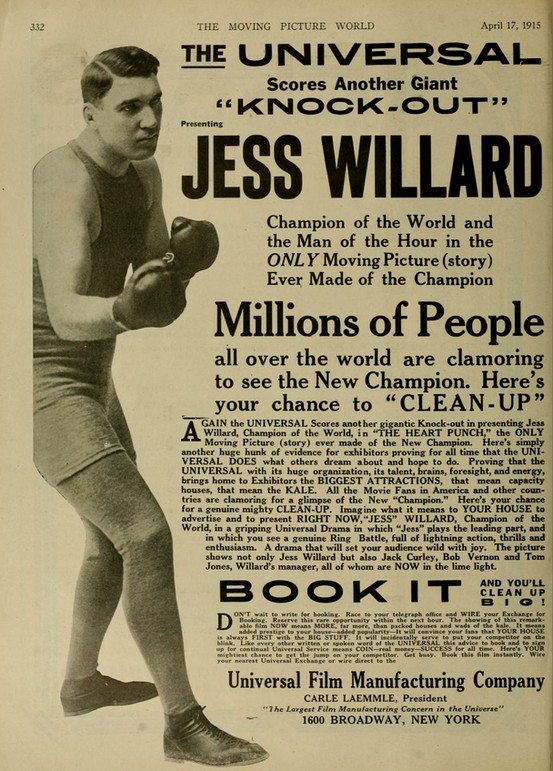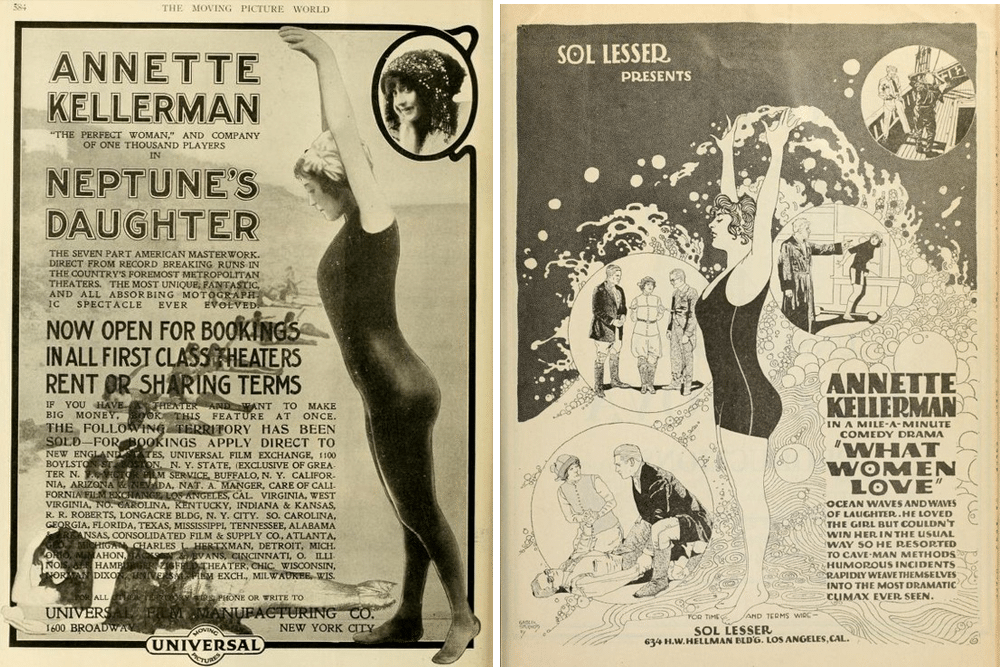Sports have always played an important part in film. Among the earliest films to be shown on Thomas Edison’s Kinetoscopes was a match between boxers Michael Leonard and Jack Cushing. The match was filmed in Edison’s studio the Black Maria. The match was broken down into 6 1-minute rounds, and instead of being shown as a 6-minute-long film, Edison broke up the footage and divided it between 6 Kinetoscopes. Each round could be watched for just 10 cents. You can watch one of the rounds below.
The success of Edison’s filmed fights proved to filmmakers and exhibitors that filmed sports would be a huge draw for audiences. Just as audiences were attracted to filmed versions of plays that they had never had the chance to see, they were also interested in seeing filmed sporting events that they hadn’t had the opportunity to see in person.
Not only were they interested in seeing filmed matches and games, they were interested in seeing scripted stories starring athletes. Studios rushed to sign hot athletes and then used them as the star attraction for those films. The story, if there was one, didn’t matter as much as the names and faces that were involved, and the ads of the time reflect that. The ad for Frank Chance’s film “Baseball’s Peerless Leader” lists the name of the film as the last bit of information on the page, and does little to set it apart from the rest of the text.
Similarly, the ad for Jess Willard’s film, “The Heart Punch” only casually lists the film’s title in the midst of the rest of the ad’s body text. By far, the largest elements in the ad are Willard’s photo and name.
Of course, male athletes weren’t the only ones studios pursued. Annette Kellerman was a world famous swimmer and was the first woman to attempt to swim the English Channel. Thanks to her contributions to swimming (pioneering the design of the modern women’s bathing suit, creating the sport of synchronized swimming), she became a huge draw on the vaudeville circuit. Seeing her potential, studio execs began to sign her to star in roles that would highlight her figure (she was dubbed “The Perfect Woman”) and her swimming ability. Kellerman’s story would later become a film itself in the form of “Million Dollar Mermaid” made in 1952, starring Esther Williams.
The biggest sports name of that period was Babe Ruth, so when First National Pictures signed Ruth, they took out a double page spread in the industry tradepapers to let exhibitors know…even though they hadn’t developed any pictures for him yet.
And just as the silent film began dying out, Ruth had the chance to return to the medium with a cameo in Harold Lloyd’s final silent film, “Speedy.” In addition to showing actual footage from one of Ruth’s games, it also featured a fantastic and hilarious sequence of Lloyd trying to get Ruth to his game on time. You can watch the sequence below.
New to our silent film series? Be sure to catch up by checking out our previous entries here.
Want to dive deeper into the world of silent film? Keep up with my posts over on Curtains or on Chicago Nitrate.



